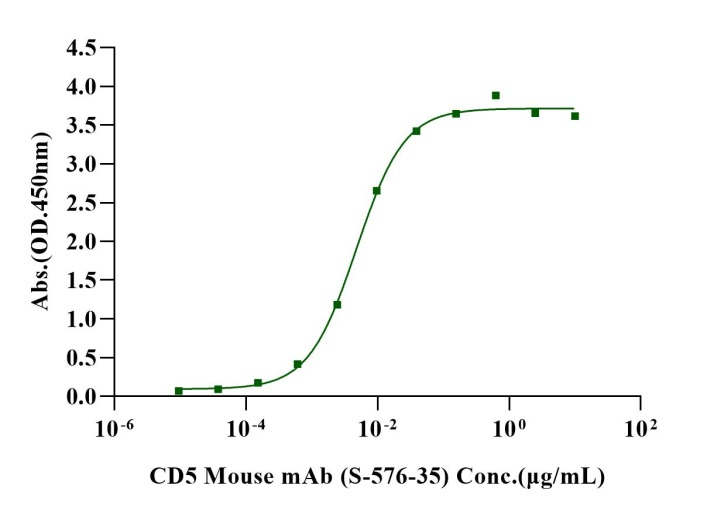53-60kDa (Reducing)
Reconstitute at 0.1-1 mg/ml according to the size in ultrapure water after rapid centrifugation.
· 12 months from date of receipt, lyophilized powder stored at -20 to -80℃.
· 3 months, -20 to -80℃ under sterile conditions after reconstitution.
· 1 week, 2 to 8℃ under sterile conditions after reconstitution.
· Please avoid repeated freeze-thaw cycles.
1. Bhandoola A, Bosselut R, Yu Q, Cowan ML, Feigenbaum L, Love PE, et al.. CD5-Mediated Inhibition of TCR Signaling During Intrathymic Selection and Development Does Not Require the CD5 Extracellular Domain. Eur J Immunol (2002) 32:1811.
2. Tarakhovsky A, Müller W, Rajewsky K. Lymphocyte Populations and Immune Responses in CD5-Deficient Mice. Eur J Immunol (1994) 24:1678–84.
CD5, one of the earliest markers used to identify T cells, is a 67 kD transmembrane molecule that is constitutively expressed on all T cells and is a negative regulator of lymphocyte function. T-cell surface glycoprotein CD5 is also known as Lymphocyte antigen T1/Leu-1 and LEU1. CD5 is also a negative regulator of thymus cell stimulation. Lack of CD5 promotes positive selection of poorly selected thymocytes and increases negative selection of high-affinity clones. Along with its negative effect on T cell stimulation, CD5 was shown to diminish activation-induced cell death (AICD) through its interaction with casein kinase 2 (CK2).
2μg (R: reducing condition, N: non-reducing condition).

Immobilized Biotinylated CD5 His&Avi Tag Protein, Human (Cat. No. UA010808) at 2 μg/mL on Streptavidin precoated (0.5μg/well) plate, can bind CD5 Mouse mAb (S-576-35) with EC50 of 4.01-5.72ng/ml.